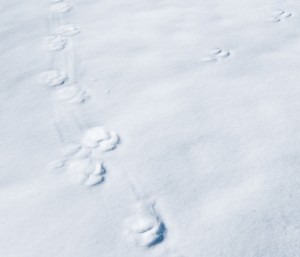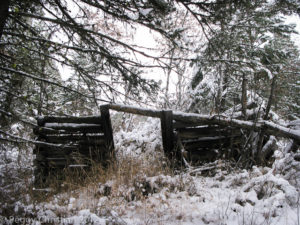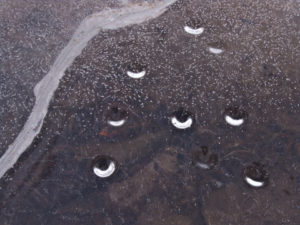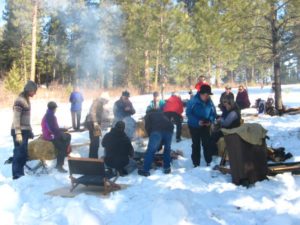We begin at the derelict packrat cabin. Slowly we plod up the overgrown road. Our snowshoes tangle in the branches of the downed tree as we struggle to get over or under it. There are 15 of us. The oldest is 85 and grew up on a ranch before plumbing and electricity. The sturdiest is 78 and was raised on a Mennonite farm. She knows the ways of self-sufficiency. She is followed by her husband. He has spent 37 summers in a lookout tower watching the top of this mountain for a spark of fire. I am the youngest, struggling to learn what these fellow hikers have known all their lives.
intrepid guides
wear a deep path through new snow
I follow their tracks
On the saddle the trees open out into a meadow. A chipmunk alerts the woods to our presence. A raven cackles overhead. The transmission lines which cut through these wild woods whines with power for towns all along the Montana Highline. To the east the Rattlesnake Wilderness flows around the base of Stewart Peak. To the southwest the city of Missoula creeps up the sides of the hills.
divide
between two worlds
we catch our breath
We mill around the clearing until we find three sets of tracks slicing across the snowfield. Four large rounded toes. A three lobed heel pad. They are as large as the palm of my hand, with a leading toe that lines up with my middle finger. No nail marks. The print of a tail drag.
wild eyes peer
flash of tawny fur amid the trees
a squirrel or…
A storm cloud shadows the meadow. We cross over to the opposite slope and begin our decent. From here there is no straight path down to the old homestead. We wander through the tangle of mountain ash and serviceberry bushes. We duck under canopies of Douglas Fir and step over deadfall.
cocked heads
snowshoe hare tracks
in unblemished snow
At the bottom of the draw we go to inspect the ruins. Hopes and dreams stacked in peeled logs that cave in from the center. Through the window frame an aspen tree grows in the middle of the barn. The decaying timbers, cut in 1911 to shelter the inhabitants from the elements now rot in the rain and snow, feeding the undergrowth that is reclaiming the homesite.
single broken wall
thin divide between
the wild outside and in.
This piece is in the form of a haibun. Haibun tells a story, mixing a short prose piece with a haiku.





